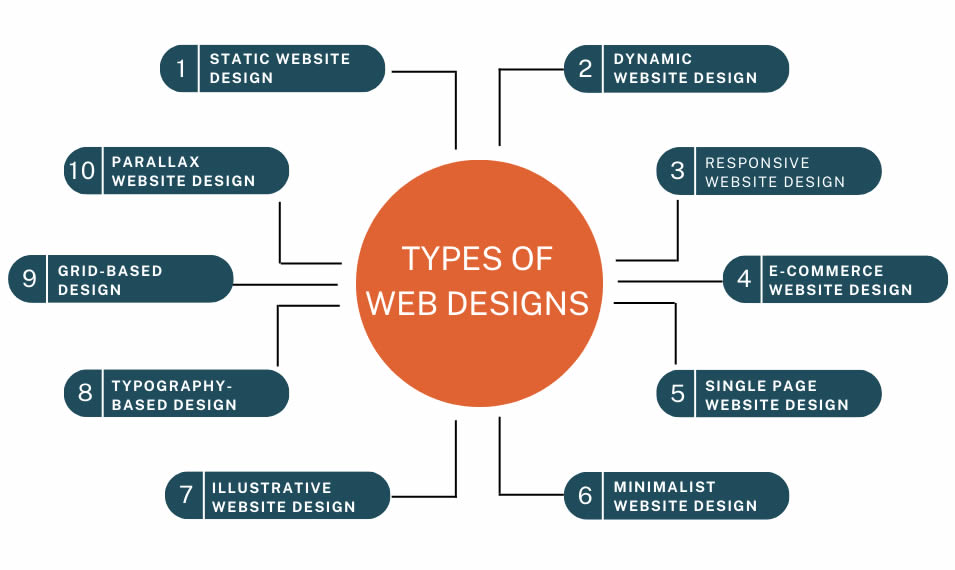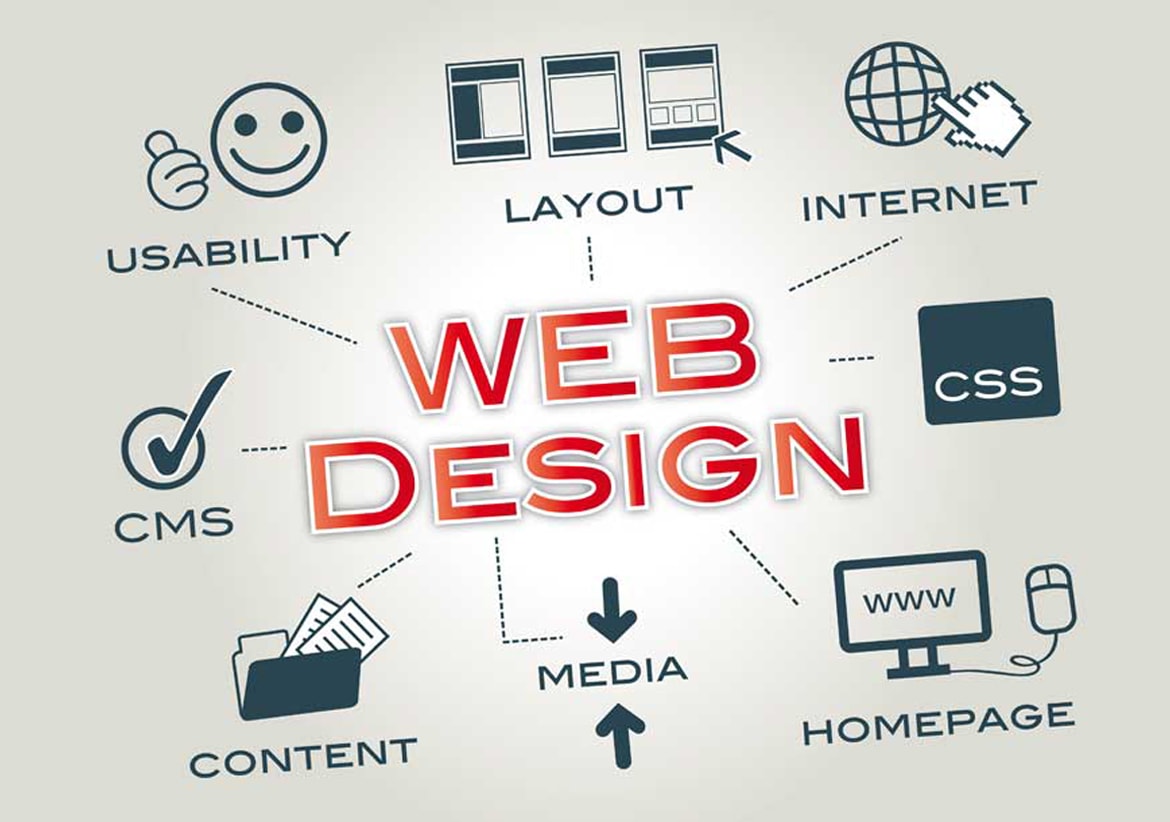Why Web Design is Crucial for Building a Strong Online Presence
Why Web Design is Crucial for Building a Strong Online Presence
Blog Article
Exactly How Effective Internet Design Can Boost Customer Experience and Conversions
In the significantly competitive digital landscape, reliable internet design plays a pivotal duty in improving customer experience and driving conversions. By concentrating on user-centric principles, such as clear material pecking orders and user-friendly navigation, businesses can create interesting systems that not just draw in site visitors but likewise help with smooth interactions. As we explore the key aspects that add to effective web layout, it comes to be noticeable that the effect on user satisfaction and conversion rates is profound. Comprehending these dynamics might discover strategies that might change just how customers engage with your site.
Relevance of User-Centric Layout

User-centric style stresses use, which is crucial for decreasing and keeping individuals bounce prices. When users can browse an internet site effortlessly, they are more probable to explore its material and transform right into clients. In addition, a user-centered method cultivates trust and credibility, as customers really feel that their requirements are valued and dealt with. This not only boosts their experience yet additionally urges brand name loyalty.
Additionally, adopting user-centric concepts can separate a site in a congested digital landscape. As competition intensifies, companies that prioritize their individuals' experiences gain a significant advantage. Eventually, the value of user-centric design hinges on its capacity to produce purposeful communications that drive conversions and foster lasting connections with individuals, making it an important element of effective web design techniques.
Crucial Element of Reliable Design
Reliable layout works as the foundation of user-centric website design, translating user requires right into visual frameworks that help with communication. A well-organized design focuses on web content via a clear pecking order, leading customers' eyes to necessary details (Web design). This pecking order is often established utilizing shade, spacing, and size, making certain that vital components stick out
Another crucial element is making use of whitespace, which protects against overcrowding and boosts readability. Whitespace enables aspects to breathe, making the total design show up cleaner and simpler to browse. In addition, uniformity in design aspects, such as fonts and colors, cultivates experience and trust, making it possible for customers to browse the site with greater simplicity.
Grid systems can likewise be invaluable, offering a framework that aligns material realistically and visually. This positioning boosts the individual experience by creating an organized aesthetic flow. Versatility in layout-- like responsive style-- makes certain that internet sites execute well throughout numerous gadgets, catering to varied user choices.

Navigational Ideal Practices
Instinctive and clear navigating is important for enhancing customer experience on an internet site. A well-structured navigating system allows users to discover info rapidly, which directly impacts their contentment and chance of conversion. Carrying out an ordered framework is essential; utilize classifications and subcategories that practically team associated material, making it simpler for visitors to discover.
Uniformity in navigating aspects is additionally vital. Make sure that switches, menus, and links preserve harmony stylishly, shade, and placement throughout all web pages, offering individuals with a familiar structure as they navigate. Furthermore, make use of descriptive tags for navigating items. Rather than generic terms, choose clear labels that properly show the material, assisting individuals in making informed decisions.
Integrating a search feature can better improve customer experience, particularly for content-rich internet sites. This function enables users to rapidly locate particular info without sifting with numerous web pages. Additionally, think about the usage of breadcrumbs, which offer customers with a path of their navigation course, allowing easy backtracking.
Mobile Responsiveness and Access
The growing dependence on mobile devices for internet accessibility demands that web sites not only prioritize easy to use navigation but also accept mobile responsiveness and access. Mobile responsiveness ensures that a web site adapts effortlessly to different display sizes and orientations, offering an ideal viewing experience. This adaptability is crucial, as customers expect to access information swiftly and successfully, no matter of the device they are making use of.
Ease of access, on the browse around here other hand, concentrates on making sites usable for individuals with disabilities. This consists of sticking to guidelines such as the Web Content Ease Of Access Standards (WCAG), which address problems like shade comparison, text dimension, and key-board navigating. By carrying out these requirements, web designers can create comprehensive experiences that satisfy a broader target market, therefore improving user engagement and satisfaction.
In addition, mobile responsiveness and availability not only boost individual experience but additionally favorably impact search engine positions. Internet search engine focus on mobile-friendly and available sites, making them much more likely to appear in appropriate search outcomes. Subsequently, investing in these facets of website design not just meets individual needs however also additional hints adds to overall service success through boosted visibility and improved conversion prices.
Determining Success Via Analytics
Tracking individual communications and behaviors with analytics is essential for examining the success of a website. By leveraging tools such as Google Analytics, organizations can gather vital information that exposes exactly how customers engage with their website. Metrics such as bounce prices, average session period, and conversion prices provide understandings right into customer habits and can highlight locations for improvement.
Comprehending user demographics and traffic sources even more improves an internet site's efficiency. This data enables web designers to customize content and style elements to better fulfill the needs of their target audience. In addition, tracking particular user trips helps determine potential bottlenecks in the conversion channel, making it possible for businesses to enhance their internet design accordingly.
Consistently reviewing this analytics information is essential for constant renovation. A/B testing different design elements can supply concrete proof of what reverberates with individuals, permitting educated decisions based on real-world efficiency. Ultimately, determining success with analytics not just improves customer experience yet additionally drives conversions, making certain that web style initiatives line up with service purposes. In a digital landscape where competition is tough, using the power of analytics is key to maintaining a effective and easy to use internet site.
Final Thought
Finally, efficient web design plays an essential duty in enhancing user experience and driving conversions. By focusing on user-centric concepts, applying essential layout aspects, and making certain instinctive navigation, websites can involve a diverse audience. Mobile responsiveness and accessibility additional add to a seamless communication for all customers. Eventually, measuring success through analytics enables continuous enhancement, ensuring that style strategies continue to be aligned with user demands, therefore promoting company growth and success.
In the progressively affordable digital landscape, effective internet style plays a critical function in improving individual experience and driving conversions - Web design. By integrating user comments right into the style process, web developers can craft experiences that reverberate with their target audience, eventually leading to enhanced involvement and contentment
Eventually, the relevance of user-centric layout lies in its capability to produce purposeful communications that drive conversions and foster long-term relationships with users, making it a crucial element of effective internet style methods.
Inevitably, gauging success via analytics not only enhances user experience but also drives conversions, ensuring that internet layout initiatives align with business goals.In verdict, reliable internet style plays an essential role in improving user experience great post to read and driving conversions.
Report this page